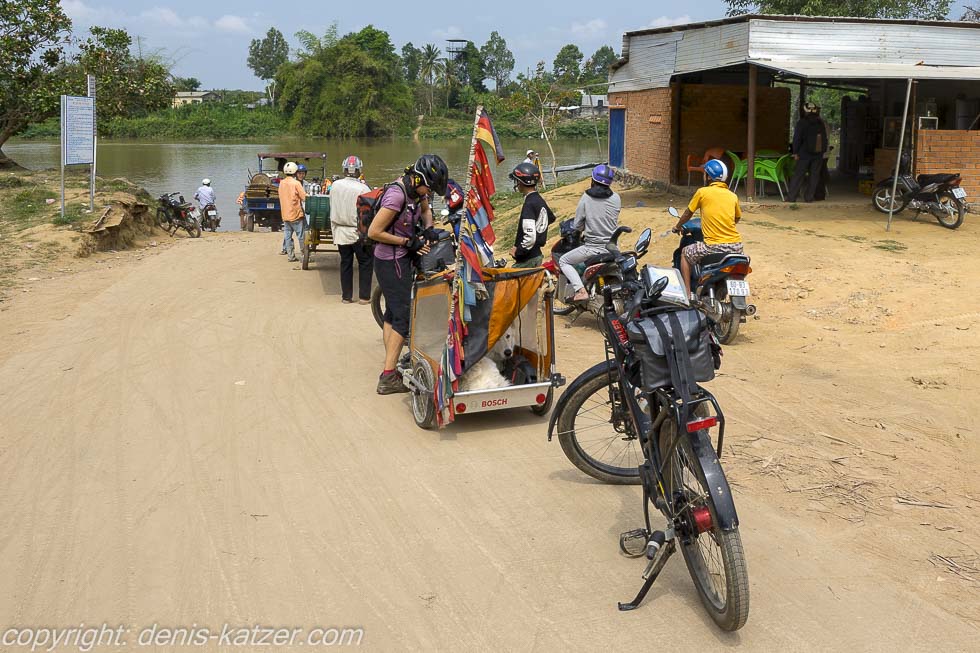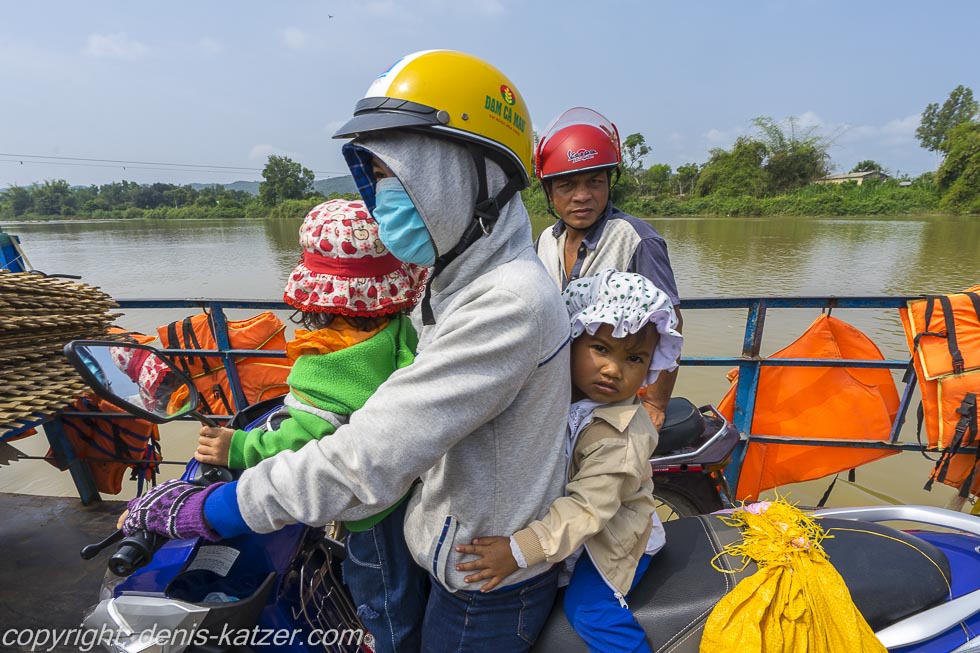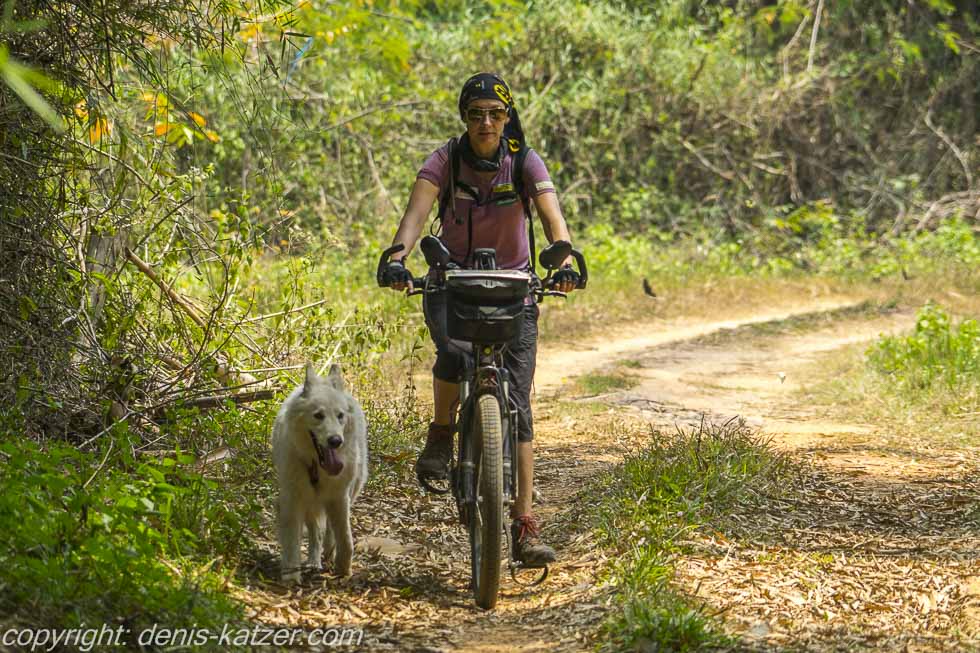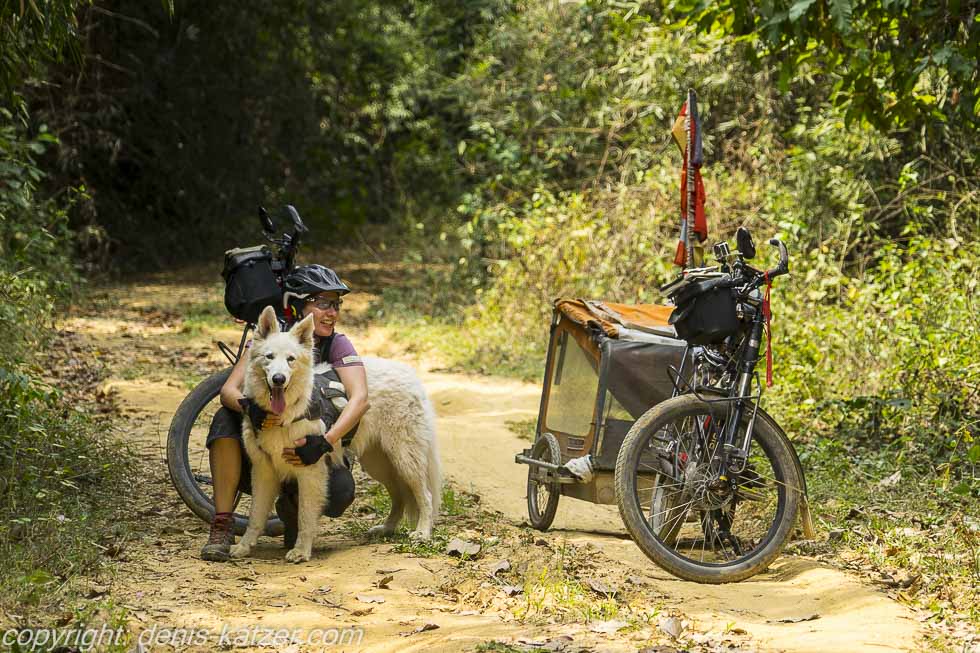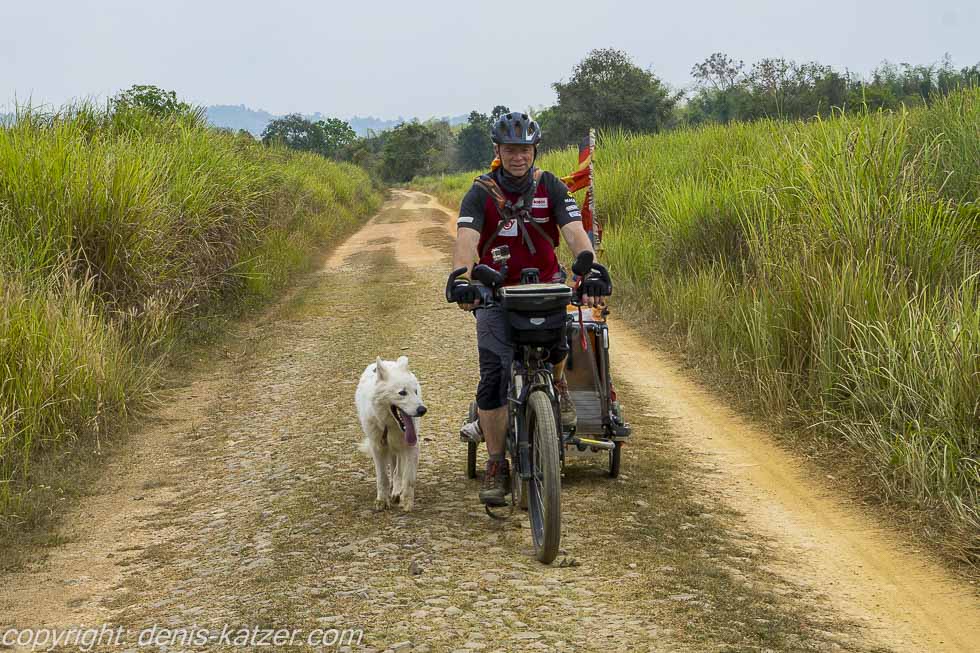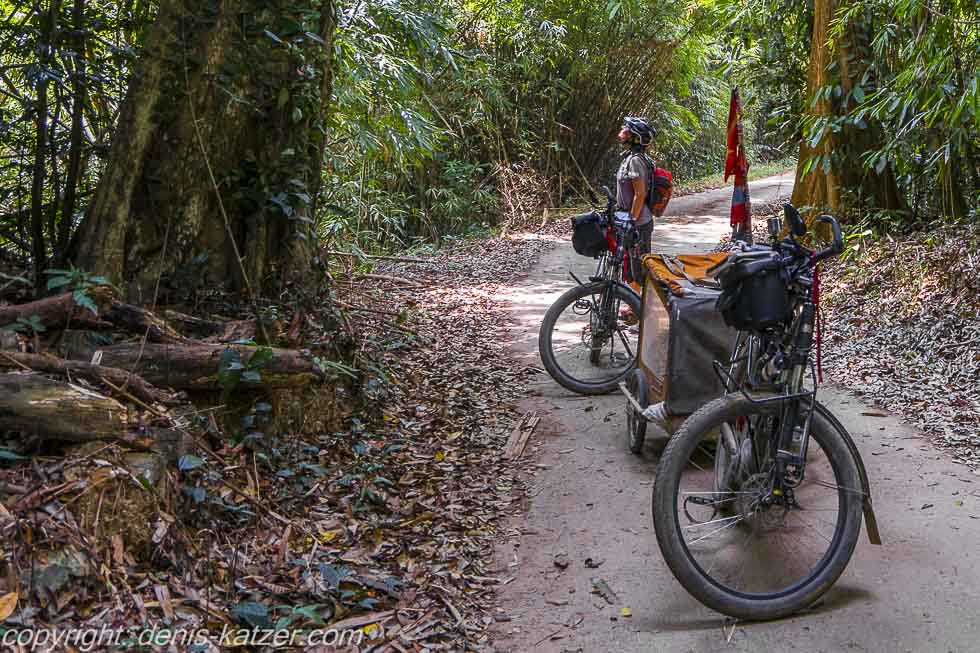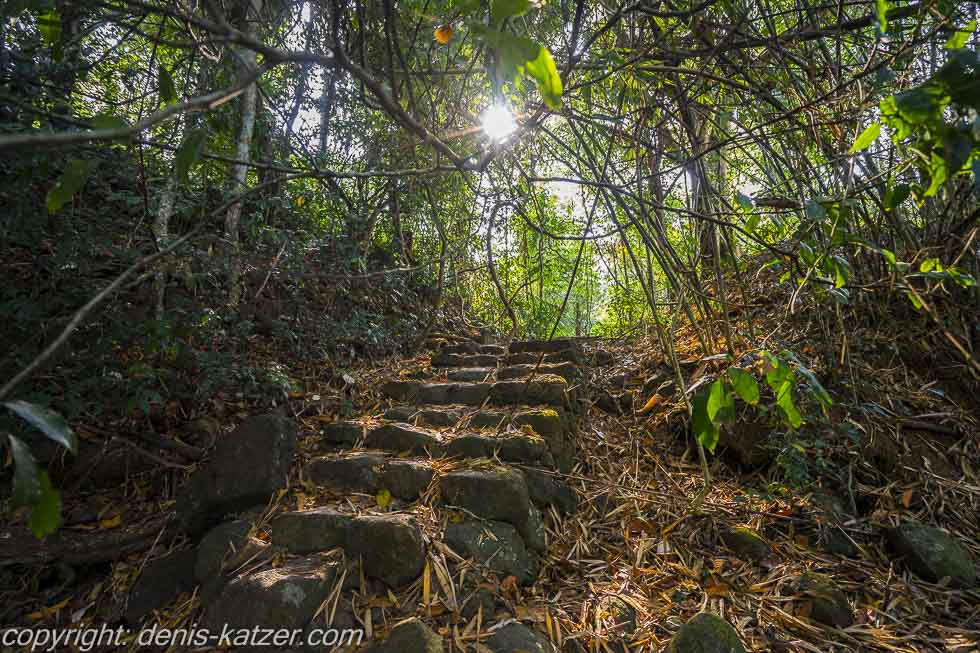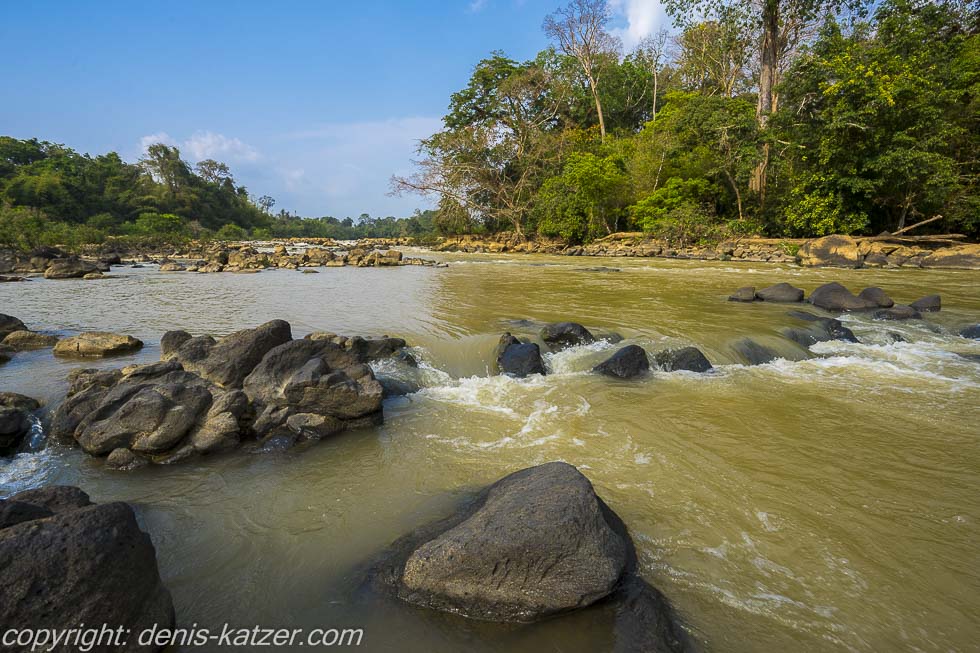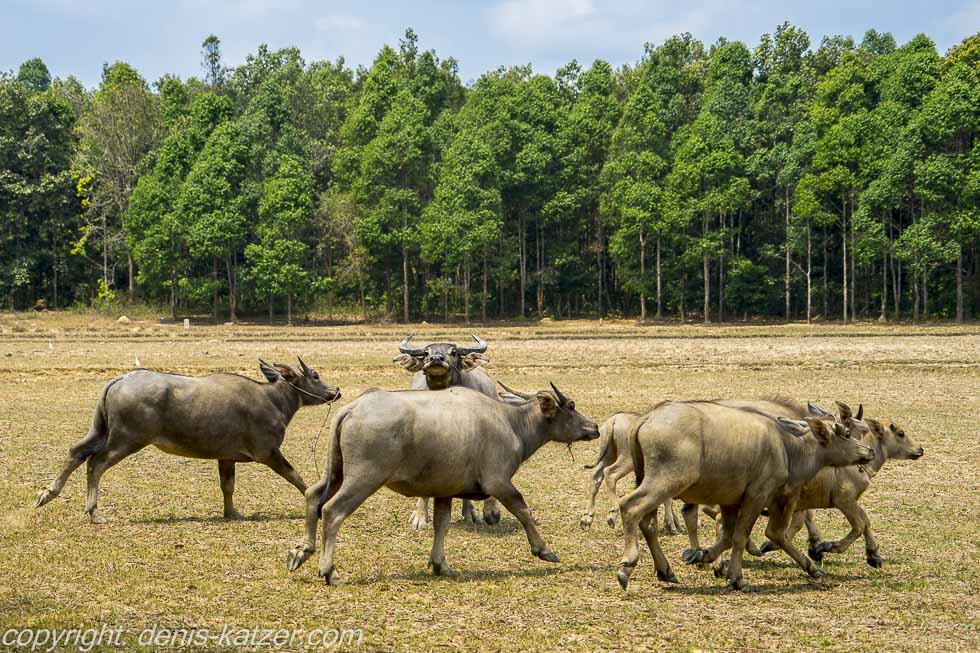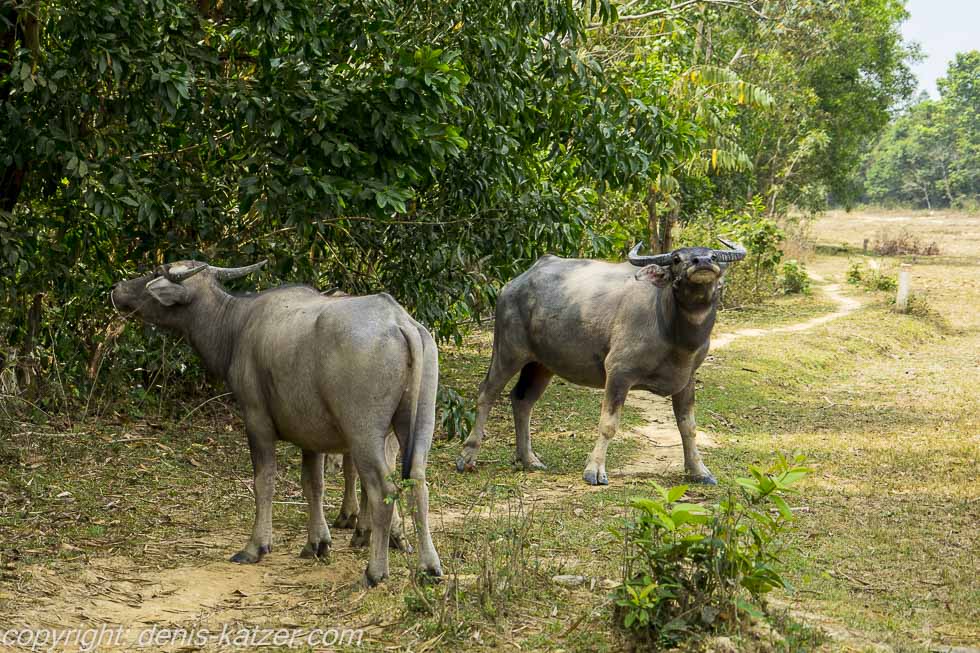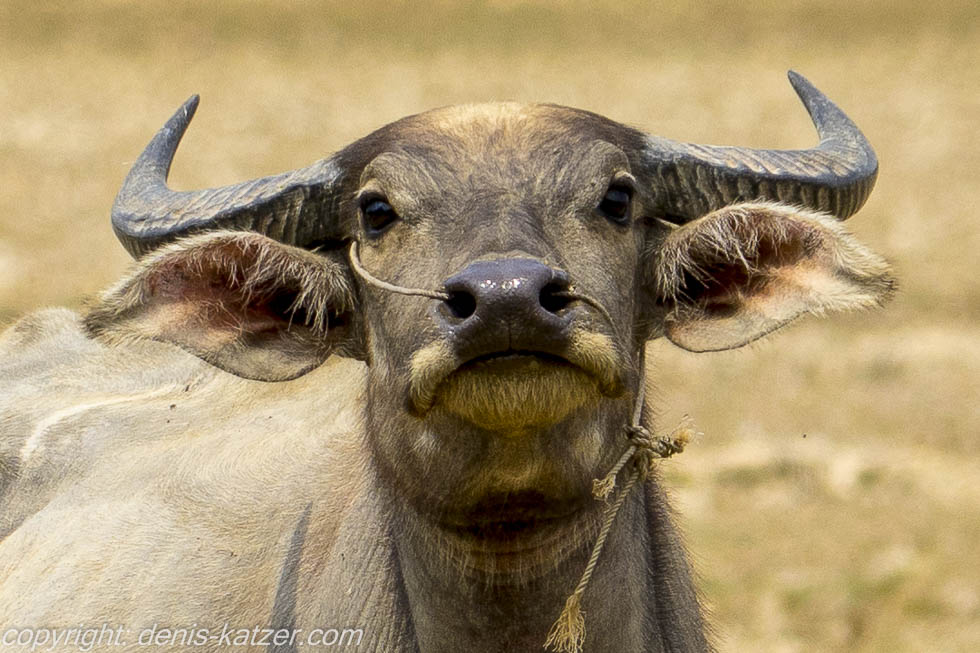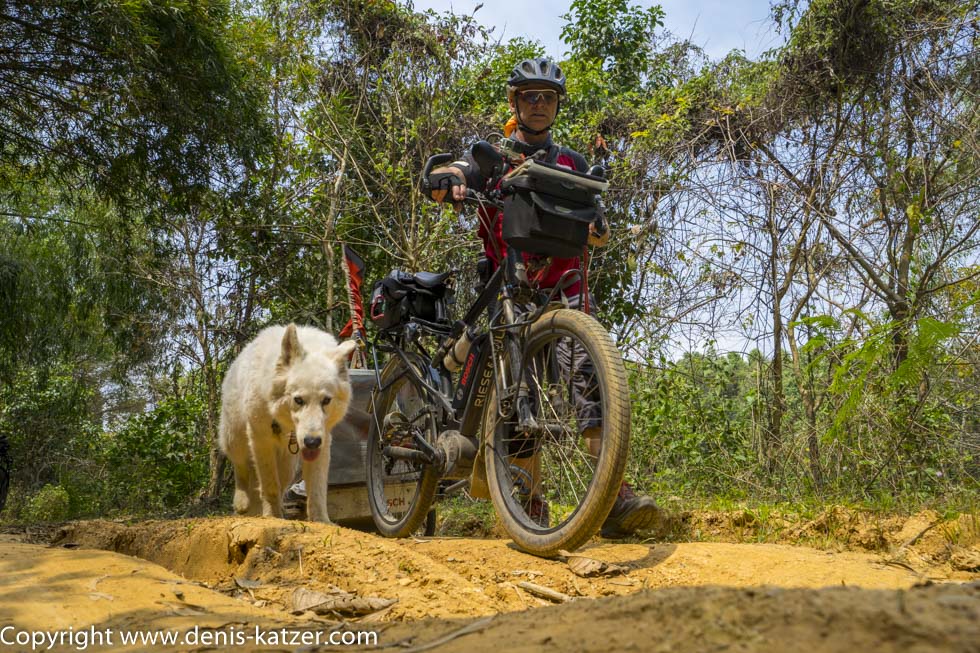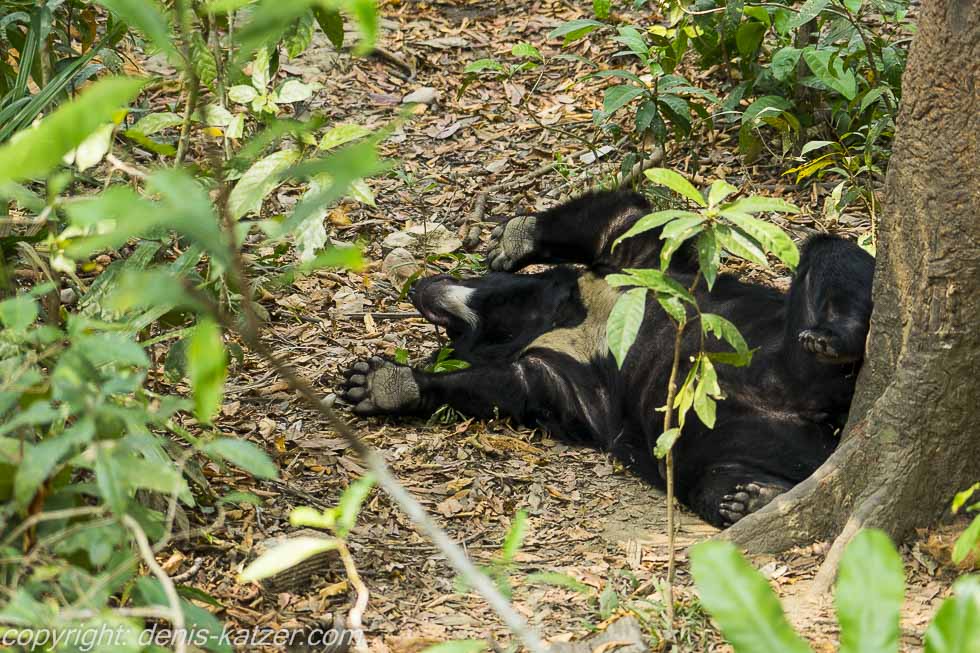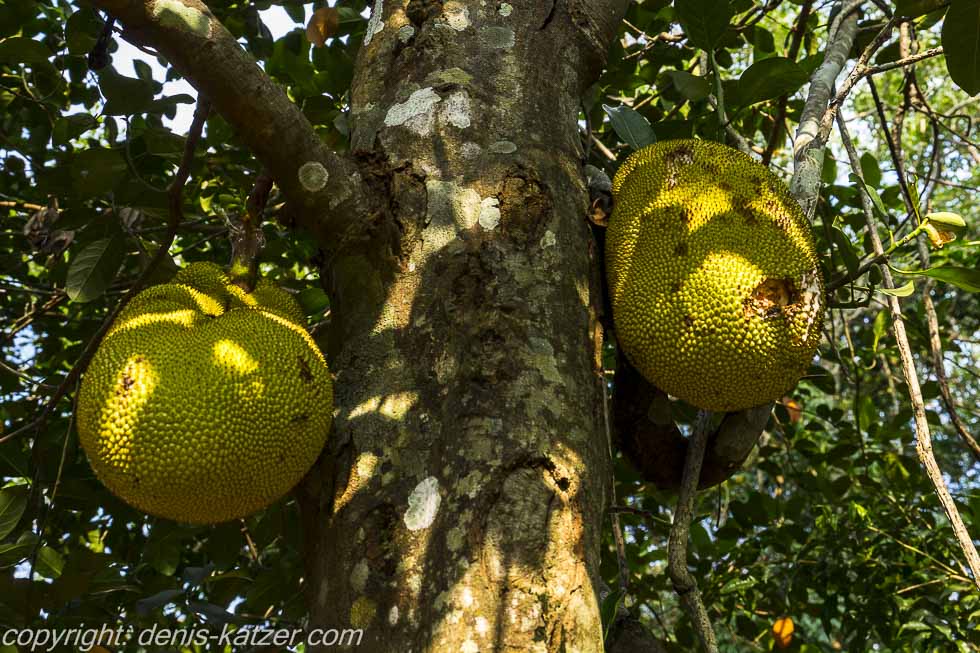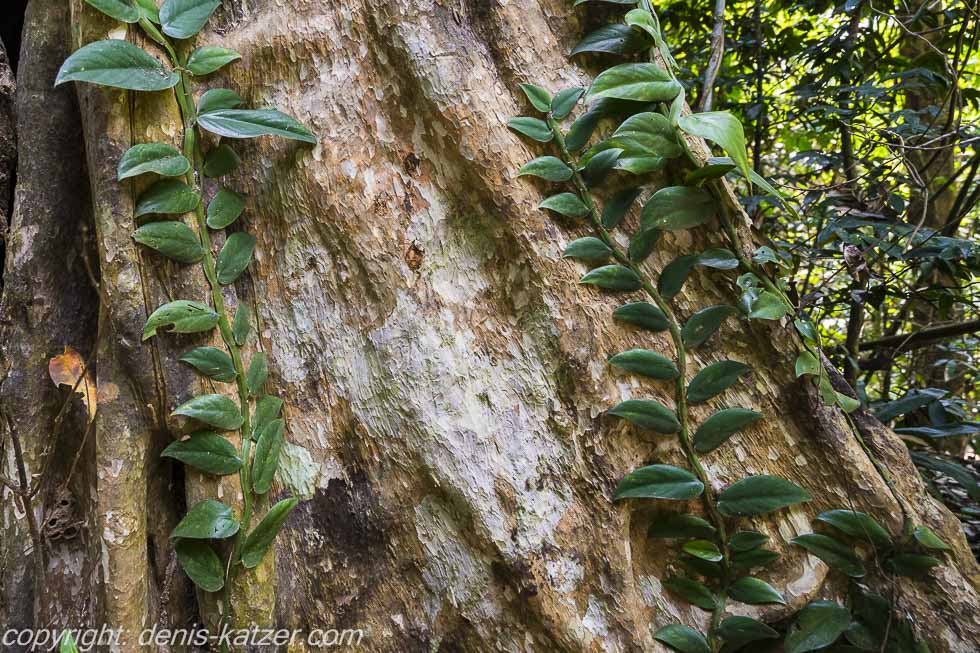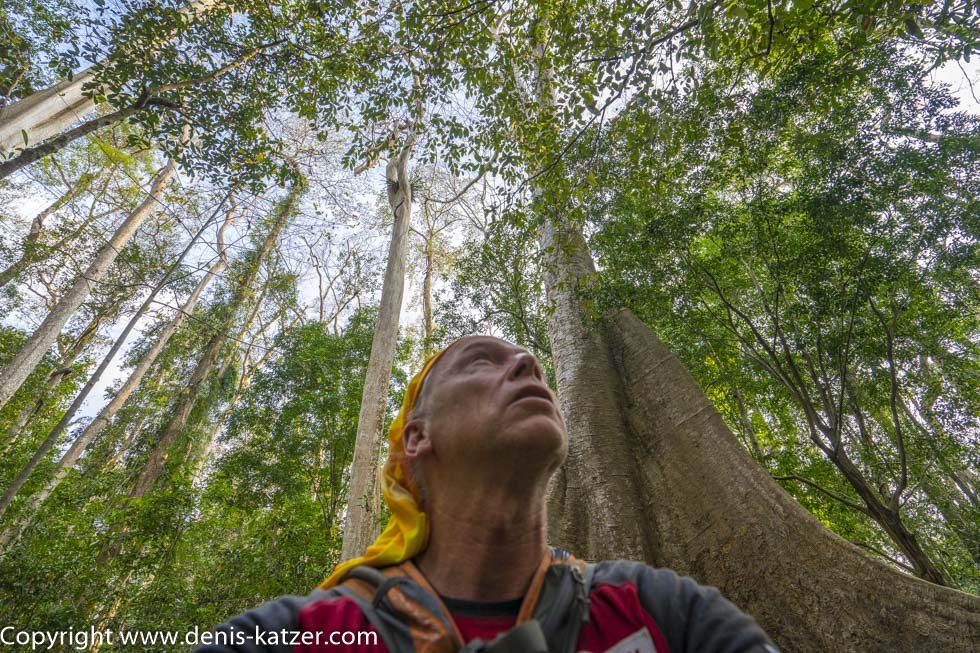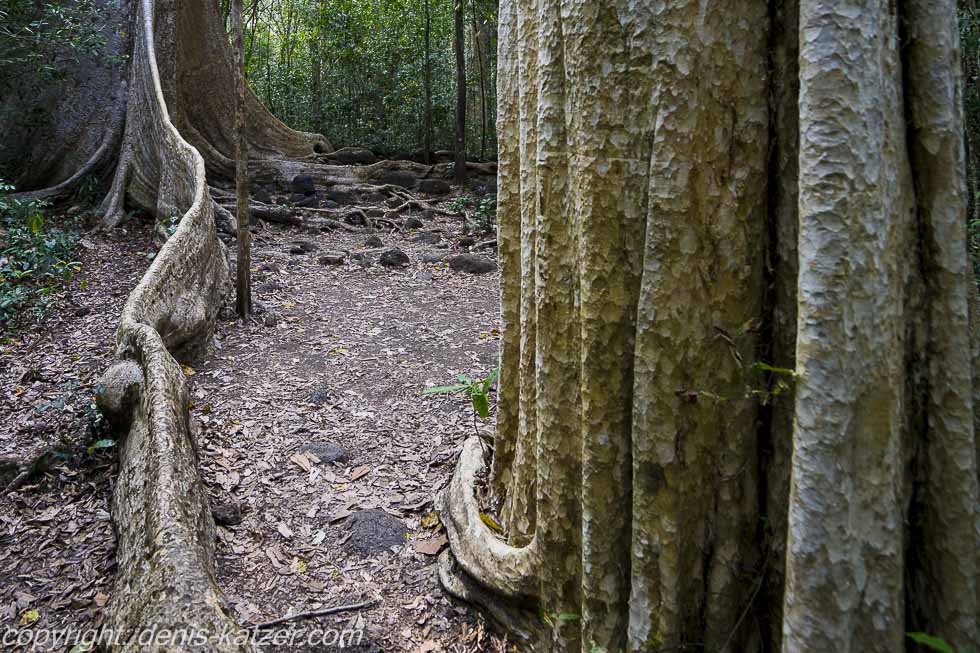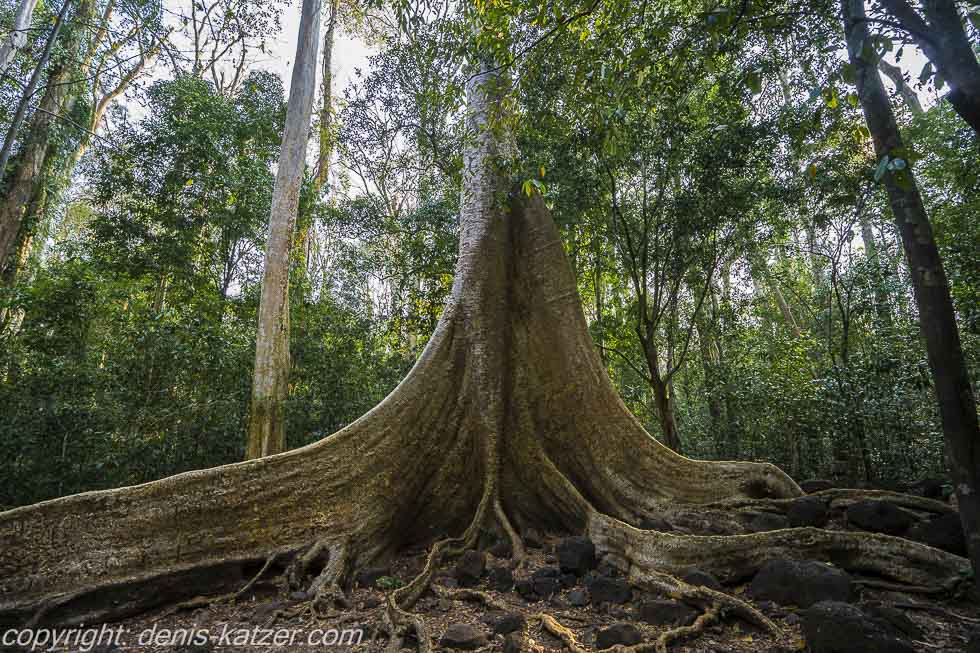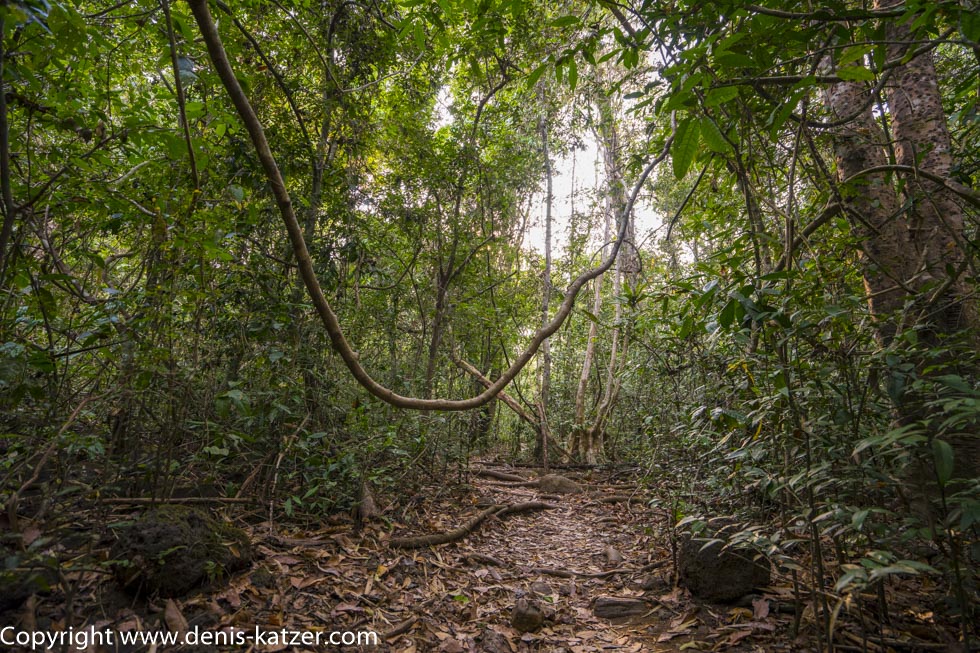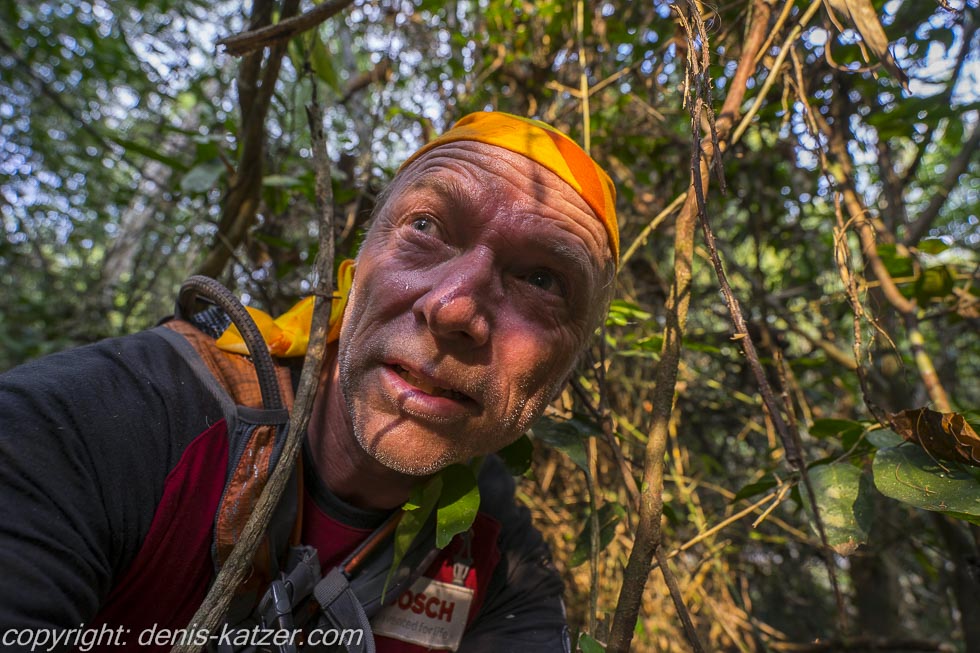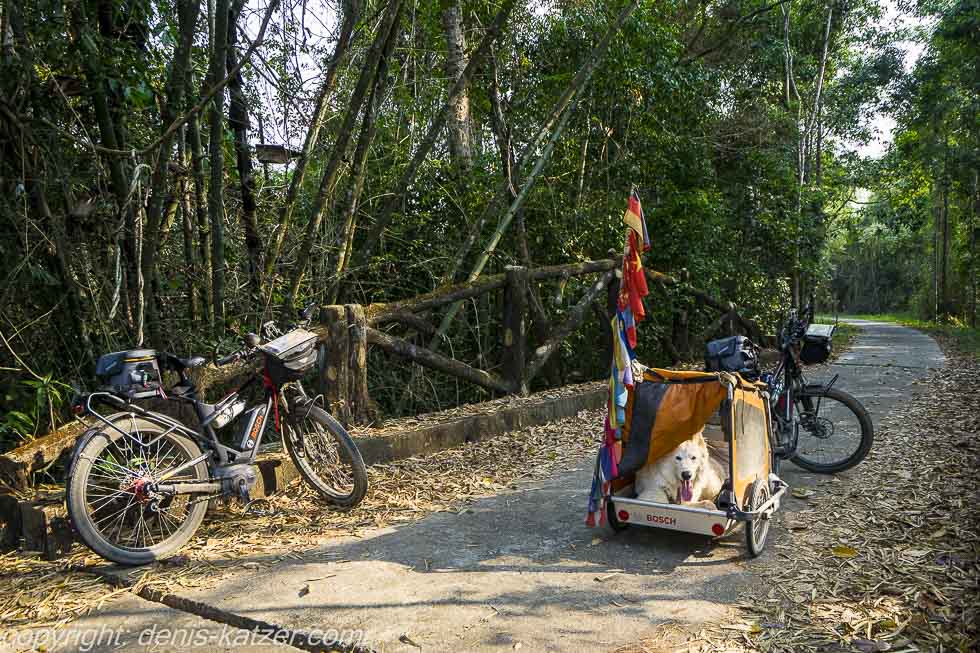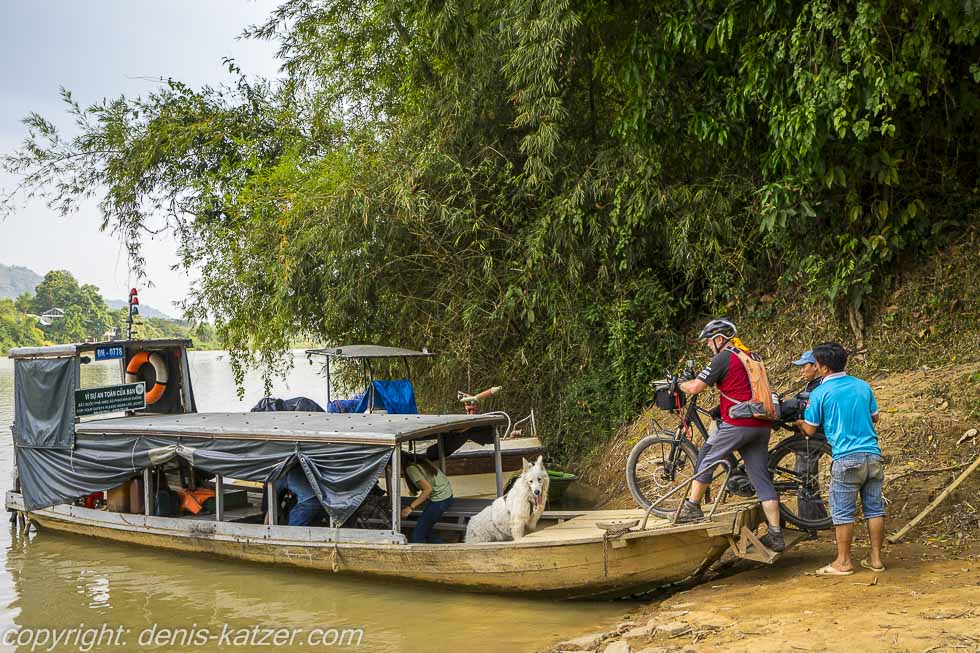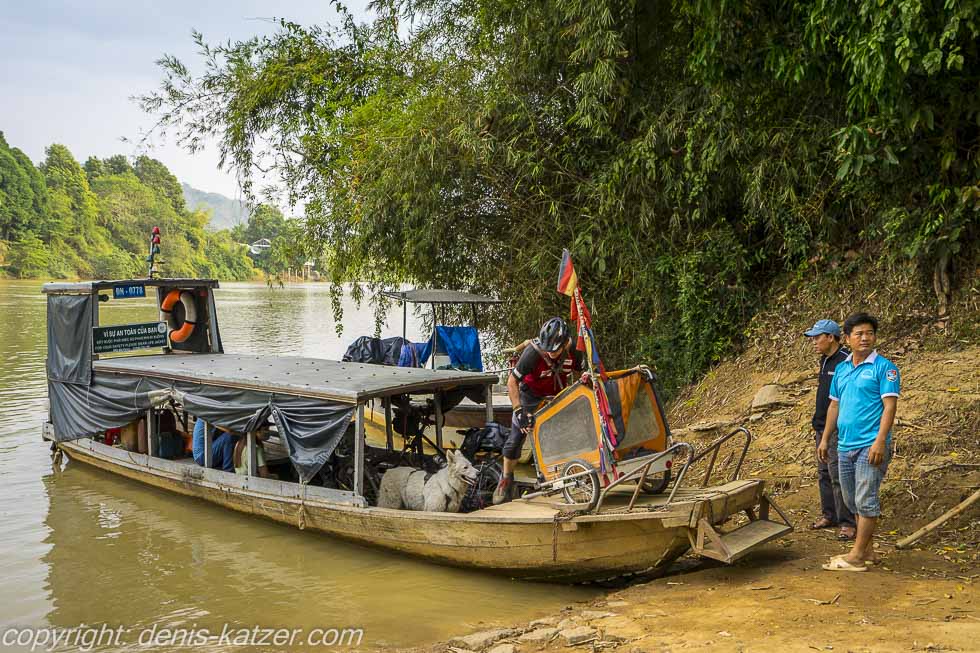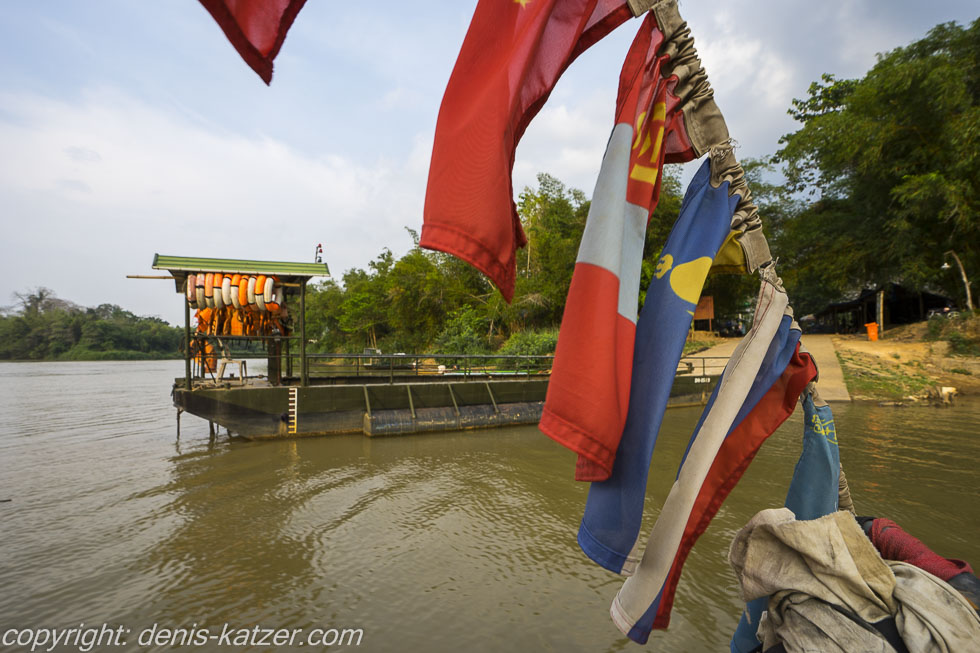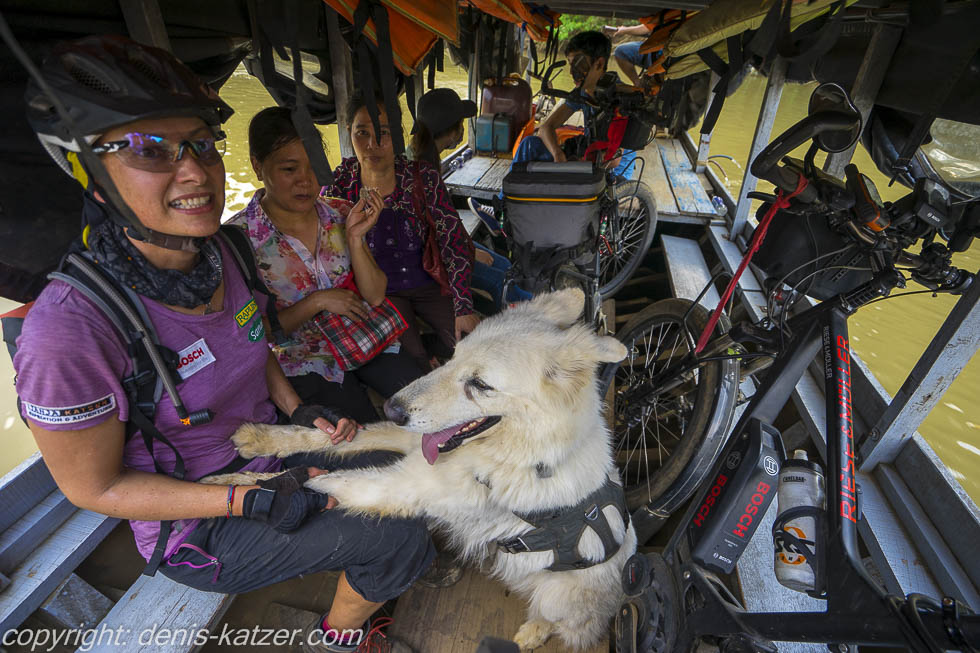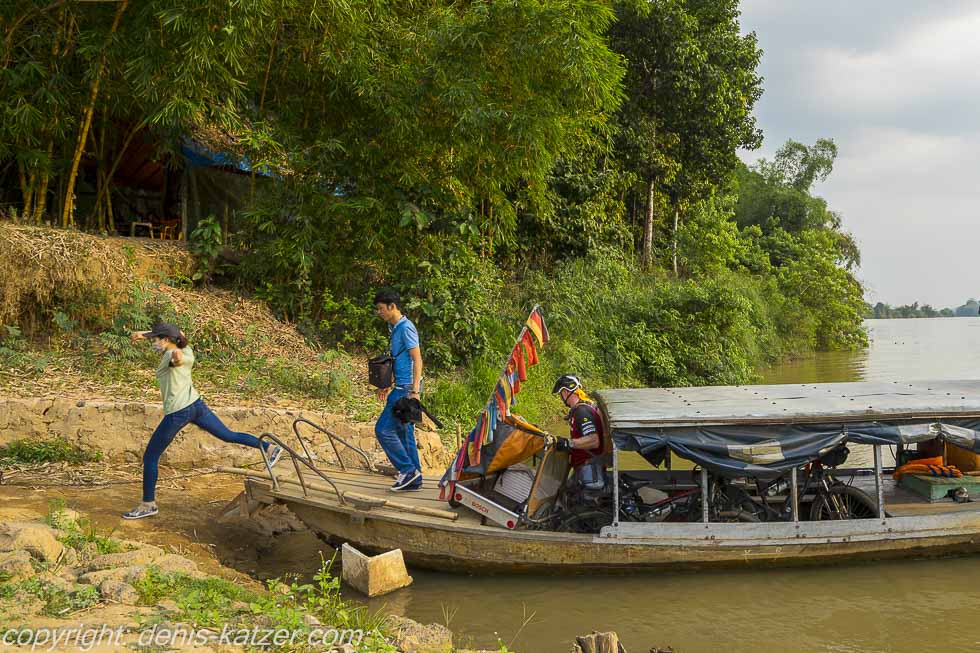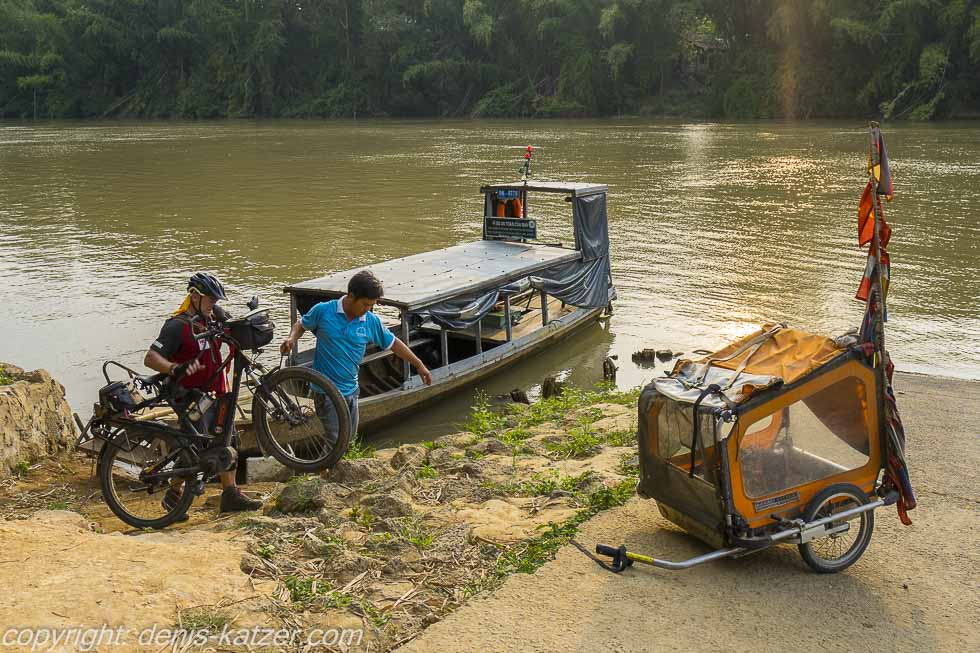
Riding an e-bike in the national park – TCM responsible for the extinction of rare animal species – cruelty to animals
N 11°25'15.9'' E 107°25'49.3''
Date:
12.03.2017
Day: 621
Country:
Vietnam
Province:
Đồng Nai
Location:
Kat Tien National Park
Latitude N:
11°25’15.9”
Longitude E:
107°25’49.3”
Daily kilometers:
35 km
Total kilometers:
22,704 km
Soil condition:
Asphalt / gravel
Maximum height:
55 m
Total altitude meters:
68.623 m
Sunrise:
05:59 pm
Sunset:
6:00 pm
Temperature day max:
33°C
(Photos of the diary entry can be found at the end of the text).
We cycle south along Dong Nai on a narrow road with little traffic. After 20 kilometers we reach the announced ferry station. On a dusty dirt road, we let our bikes roll to the bank of the river onto the waiting ferry boat. We are joined by a few mopeds, a small tracktor and passengers on the iron platform. As soon as we have found our position, the decrepit boat sets sail. A man sells us a ticket for 10,000 dong (€0.42). Just a few minutes later, the rust bucket docks on the other bank, whereupon everything with wheels chugs off again. As planned, we follow the narrow shore road, which turns into a potholed sandy track a few meters after the village. As soon as we leave the village behind us, the jungle trees arch their green branches over the road. To our left, a steppe-like landscape spreads out, which has been taken over by a herd of water buffalo. I lean my bike against a tree and sneak into the bushes to photograph them. A young bull raises his head and catches my scent. A rope through his nostrils shows me that he is domesticated. Nevertheless, he seems threatening to me. Get out of here, it goes through my head, whereupon I slowly retreat. As we continue, the forest to the left and right of the path becomes denser. “I don’t think there will be any more checkpoints,” I say, pleased to have managed to get into Cat Tien National Park on our bikes so easily. “We’d better put Ajaci in the trailer,” says Tanja, “in case there’s a checkpoint around the next bend and dogs aren’t allowed in the park.” The path is now quite overgrown. We only bump over the tangled roots of the trees and bushes at walking pace. “What’s that up ahead?” Tanja’s call snaps me out of my concentration to steer my bike safely over the ground. “I don’t believe it. That’s a barrier in the middle of the jungle!” As we reach the passage at the fence, we are stopped by a Vietnamese man. He shows us clearly with hand signals that we can’t go any further. We are friendly, continue to think positively, hand him our business card and try to explain that we have ridden our bikes all the way here from Germany. “You have to turn back,” we understand the serious-looking guard. We stop and point to the road. “We’ll take the ferry in the center of the park and ride it back to the other bank,” we explain. The man shakes his head unperturbed and taps a number into his dirty smartphone. When a voice answers, he hands me the phone with the broken display. In bad English, a woman tries to make it clear to me again that I’m not allowed through here. “What? I don’t understand?” I say in English and hand the phone back to the jungle guard. He shouts something unintelligible, whereupon a young girl climbs out of the simple wooden hut not far from the fence and strolls over to us. She also types something into her smartphone and shows it to me. “It is not allowed to drive through here”, I read. “Why not?” Although I now realize that I’m going to bite my teeth out at this point, we persevere and promise to leave the national park again on the other side. “I don’t think that makes sense. Let’s turn back,” I say to Tanja as the guard taps another number into the phone. “Okay, we’ll let you in, but when you reach the administration building of our park you have to pay the entrance fee and the daily rate for bicycles,” says the male voice in good English. “Even though we ride our own bikes?” I ask briefly. “Yes. If that’s okay with you, my security guard will let you through.” “That’s absolutely fine with us,” I reply and give the guard his smartphone back. Now he gives us a smile for the first time, opens the barrier and lets us into one of the most important national parks in southern Vietnam. “It’s incredible what you can do if you really want to,” says Tanja, as we are now allowed to explore the national park on our own bikes, which protects the largest remaining tropical lowland rainforest, 41 animals on the red list of endangered species and around 20 percent of the species found in Vietnam.
It’s hot, the sun is blazing down from the firmament. Even though we have e-bikes, we are sweating profusely. Due to the midday time of day, we don’t see any animals, large or small. Even though there are said to be around 25 elephants here. Every now and then we spot a kingfisher or one of the beautiful double-horned birds. The chirping of the cicadas is almost deafening in some areas. Although 99% of the primary forest was destroyed by American defoliation, some areas have recovered, at least visually. However, there are still no trees growing in the severely affected areas, only bamboo and grass. “This is such an affected region!” I shout to Tanja as flat grassland spreads out to the left and right of the bumpy path. It was only in 1992 that the very rare Java rhino was discovered here. Because it was certain that rhinos had already died out in this region years ago, this sensational discovery brought international attention and aid money to the national park. In 2010, the last Java rhino was found dead. “As far as I know, it was shot by poachers because of its horn,” I say to Tanja, looking out over the grassland during a short break. “It looks like traditional Chinese medicine is now partly responsible for the extinction and endangerment of rare animal species,” Tanja reflects. “Absolutely. Medicine should actually be a positive thing, but if rare animal species are being wiped out through its production and our fellow animals are also suffering massively, I think it has completely lost its purpose and justification. TCM has been using around 1500 animal and 5000 plant species for thousands of years to cure diseases of all kinds. We have seen that in southern China, animal species are still being eaten and pulverized in order to end up on the shelves of the endless number of pharmacies. It’s mainly animals that are considered to be particularly strong or have special abilities that are at risk,” I explain.” “Why?” “Supposedly, the powers attributed to them are transferred to humans when they are eaten.” “And that certainly includes rhinos, tigers and bears,” says Tanja. “Yes, exactly. Their size and strength were their downfall, as they were wiped out in Vietnam and throughout Asia or are threatened with extinction due to merciless hunting. But it is not just the big ones that are affected, but also millions of seahorses or snakes, which are slaughtered en masse because they are considered to be long-lived, or any kind of pangolin that is said to be particularly tough. Even the penises of robes are mixed into so-called dragon pills or the horn of the endangered Saiga antelope, which serves the same purpose as the rhinoceros horn, is processed into medicine on a very large scale, so that the world population of these animals has fallen by 90% in the last 25 years.” “It is simply unbelievable that we humans are still wiping out our wildlife in the 21st century.” “The problem is simply that the population in Asia as a whole is constantly growing and so is the economy. This means that there are also more and more people who can afford more, who make it from simple rice farmers into the middle class and thus strengthen TCM more and more, because they are familiar with this healing method through their thousands of years of history alone, believe in it and can afford expensive products. It’s a terrible vicious circle that leaves the animals on our beautiful planet hardly any chance of survival.” “I can’t understand the governments. They have to do something about the total sell-out of our planet. They have to realize that the destruction of wildlife on our Mother Earth will eventually kill humans too.” “Well, according to my research, they are already doing something about it. In China, for example, since 2014 there have been ten years in prison for anyone who eats endangered animals or three years in prison for anyone who knowingly buys illegally hunted animals.” “Don’t make me laugh. Do you remember how they officially offered us snow leopard skins on the streets of Erenhot?” “Of course I remember that.” “Well, what’s the point of a law if nobody enforces it? It can’t be that people are locked up just because they are demonstrating against the government or the air pollution and get away with it if you sell snow leopard skins?”, Tanja gets angry. “Yes, you’re right. It’s hair-raising. I think it’s simply down to the all-encompassing corruption. Too many high-ranking politicians or influential business people are involved in such mafia-like machinations. They make a fortune out of it. As far as I know, one in three people on earth uses traditional medicine, 80% of the 1.35 billion Chinese alone. The annual turnover is astronomical. It is estimated to be between 7 and 23 billion euros. Imagine that figure. How is a corrupt country like Vietnam, for example, which is currently the main importing country for rhino horn and the center for the international ivory trade, supposed to control such a huge crime against our Mother Earth and her inhabitants when the bosses themselves are the biggest beneficiaries? Some of the brainless super-rich egotists drink a drink with dissolved rhino horn powder in it after a night of drinking. Such a drink costs 1000 US$ and shows how powerful this moron is. It’s supposed to help against a hangover or cancer.” “Man, that’s a really bad situation. So the lunatics are driving up the price of rhino horn with their ostentatious behavior?” “Yes. A five-kilogram horn currently fetches around 280,000 euros on the black market. That’s more than the price of gold or cocaine. That is the reason why all five rhino species that still exist in our world are directly threatened with extinction. The last African black rhinos are therefore guarded around the clock. This even goes so far that the rangers engage in regular battles with the well-equipped poachers. If you imagine that 116 years ago there were still around 100,000 of these black rhinos and their current number is estimated at 1500, you realize just how pressurized the current situation is. In order to protect the last rhinos, their horns were even sawed off. They were killed anyway, because the stump alone brings in a lot of money. Even natural history museums have been broken into to steal stuffed rhinos.
Even the world’s remaining population of tigers (approx. 1500) is massively threatened with extinction. No wonder when you know that everything from this carnivore can be used in TCM. Its individual components are regarded as a panacea. That is the reason why a dead tiger brings in around 300,000 euros. As there are now fewer and fewer tigers, they are being replaced by lions from South Africa. This goes on until everything that moves has been pulverized and stuffed into jars and finds its place on one of the pharmacy shelves.
The turtles, which play an elementary role in TCM and can be used to make at least 114 medicines, are also badly affected. This is one reason why Indian tortoises have declined by 90% in a single decade and why one in four tortoise species worldwide is now acutely endangered… and all because of this Chinese medicine, which is ultimately acting like a curse on our planet, wiping out almost everything that is not human like a devastating tsunami. The desire for these drugs has become so great that it has obviously severely clouded the human brain and will ultimately be partly responsible when the human bacterium has eaten its own host, the earth. Because every animal has a purpose and meaning in the chain of life. If too many links are missing, the human being will ultimately be affected. There is not the slightest doubt about this. If humanity wants to survive this madness, it must act,” I conclude my speech. “Does the TCM used in Germany also use animal products?” Tanja breaks our silence. “As far as I know, they reject products in which protected animals have been processed.” “Good, at least a small glimmer of hope. All we have to do now is apply this to the whole world and the animal world will be saved.”
Our conversation changed our view of the national park and the rest of its surviving animal inhabitants. It takes a while for the sad mood to dissipate. “Look!”, I shout and point to a double-horned bird flying over our heads before disappearing into the dense green of a jungle giant. The sandy, partly stony path improves and is suddenly covered by concrete slabs, on which we make good progress. We arrive at the administration center, find the building where we buy the tickets as promised and pay the rental fee for our own bikes. We have an unsatisfactory lunch in a restaurant for an exorbitant price and because Tanja is looking after our bikes and Ajaci, I go alone to visit the collar bears. “Are there still wild ruffed bears in the national park?” I ask the zookeeper who is showing me and another German tourist around. “No, our bears have forgotten how to survive in the wild. The enclosure here is a sanctuary for abused bears that we have freed from the clutches of their tormentors in recent years.” “Abusers?” “Yes. Most of the bears lived on bile farms, where their bile was extracted over the years using a catheter. They vegetate there all their lives in small iron cages, where they often can’t even stand, and suffer from colic and abscesses. Because they need the bile for their own digestion, like every living creature, their organism often breaks down completely. In pain and perhaps out of desperation, they often bite their own paws off,” I hear and feel like throwing up.
Actually, I would like to report on the beauty of our Mother Earth. About quality of life, peoples, their religions, traditions, the wonderful landscapes in which people sometimes live and much more. However, we are increasingly confronted with the excesses of sick forms of society. As an ambassador of Mother Earth, I am therefore obliged to report on these decadent abuses, at least when they become part of our lived history. It would not be fair, blue-eyed and unfair to keep quiet about the environmental pollution and atrocities committed by my own human race, just to create the illusion of a beautiful, ideal world. In moments like these, I would prefer to hide. I am ashamed of my conspecifics for what they do incessantly and would rather be a different creature at such times. One that is not constantly murdering, torturing, eating up its own resources and acting selfishly, racist and ignorant to the point of certain self-destruction. Of course there are many of us who would never stab a bear alive in the gall bladder to extract its bile for medicine. Nevertheless, there are enough people who buy exactly this medicine and don’t even want to know where it comes from and what unimaginable suffering is associated with it. Most bile farms exist in China. Around 4,000 bears in Vietnam and 10,000 bears in China are tortured every day for Chinese traditional medicine (TCM). Many people consider liquid bear bile to be a miracle cure. The coveted subtance can now be produced artificially. However, many rich people want the real liquid gold. People obviously don’t care about suffering. The main thing is that they and their relatives are doing well. In the meantime, the Chinese population is beginning to move. More and more people who have heard about the cruelty to animals are taking a stand against bile farms. The Chinese are not brutes either. So far, many Chinese are simply not properly educated, which is also not in the interests of the industry.
“Because we have to take in more and more bears and the bear enclosure here has therefore become far too small, we will be building a larger enclosure for our bears in the near future. Then they will have more space to run around,” the keeper tells me proudly.
Back at Tanja’s, I tell her about my experiences. We continue our conversation where we left off a few hours ago. “Somehow it all leaves me at a loss. What can you do about all this suffering? To be able to achieve anything, you would have to stand up to one of the countless outrages and put all your energy into putting an end to it.” “Yes, that’s true. But don’t be so downhearted. You’re taking the trouble to write all this down. I think that’s a good contribution,” Tanja motivates me. “Do you really think so? I don’t know if that touches anyone. Does it really make sense?” “But of course it makes sense. A lot of people don’t know about bear bile tapping, about poaching for TCM, about the ivory trade, about the extensive pollution around the world and everything that’s happening to us on this journey alone. I think you’re doing a fantastic job, a really great and important job. Who sits in an egg chair for hundreds and hundreds of hours and reports openly and credibly about the world? You do that every day. I personally thank you for that.” “Wow, that’s a great statement. Thank you very much. That motivates me to keep going,” I reply and feel Tanja’s words building me up.
In a better mood again, we cycle on and find the rapids upstream. We enjoy the solitude along the Dong Nai River and listen to the birds singing. “Should we visit the giant tree before the sun goes down?” suggests Tanja. “What giant tree?” “Well, there was a big sign on the side of the path that said there was a huge old tree in the jungle.” “I must have missed it, but if you want to go there, we have to hurry. The sun will be setting soon.”
“There it is,” Tanja points to the green sign. “Can we leave our bikes here unattended?” I ask doubtfully. “You go first. Then you can take a few more pictures in the beautiful evening light. I’ll set off when you get back,” Tanja suggests, whereupon I grab the camera and hurry off along a narrow jungle path. As I don’t want to keep Tanja waiting too long and the daylight is fading, I don’t spend much time photographing, even though the jungle and the trees around me are fascinating. I reach a small fork in the road. This must be the way back, it occurs to me, as I assume that my path leads to the jungle giant and the other one meets this fork in the road via an arch. I keep to the main path and after about 200 meters, panting heavily, I reach the miracle of nature that survived the poison attack by the Americans. I stand spellbound in front of the two-meter-high roots that jut out of the jungle floor like a wall. Trying to make out the crown of the tree, I lean my head back. Far above, it sways in a gentle breeze, of which absolutely nothing can be felt down here. I would like to stay here a little longer, but Tanja is waiting for me. On the last walk around the giant, I discover the other path. I follow him to see something new and avoid walking the same route twice. After about five minutes of brisk walking, I’m still surprised that I haven’t found the path that led me to the tree. Did I miss it? Oh no, it can’t be, I think to myself. I hurry on at a rapid pace. According to my sense of time, I should have reached the small main path by now. But who knows, maybe I’ve been on it for a long time and haven’t even noticed? I’ve moved on. After ten minutes, the whole thing seems Spanish to me. I call for Tanja because I should be near the main path by now. Apart from the cicadas and a few birds, however, nothing can be heard. Should I march on? Does that make sense? Have I possibly even lost my way? Man, that can’t be right? Getting a little nervous, I sprint another hundred meters into the dark green. I can’t tell the direction because of the dense undergrowth around me. Then I give up and rush back in the direction I came from. Now I discover another narrow path to my right. Is this the way back to the tree? Or is the path I am currently on the right one? To be on the safe side, I draw an arrow marker in the jungle floor with my foot and decide to take the left-hand track. Footprints from my hurried walk here are unrecognizable on the relatively hard ground. Mosquitoes slowly awaken from their daytime slumber and emerge from their hiding places. I discover a tarpaulin lying in the bushes right next to the path. Did I miss them earlier? Suddenly a horror scenario goes through my head: I’m actually lost and have to spend the night here in shorts and a shirt, unprotected from the army of mosquitoes and leeches. In this case, I consider it a blessing that there are no more wild tigers and bears here. However, there are plenty of poisonous snakes in this forest and if I have to spend the night leaning against a tree, that’s not a good idea either. I just don’t believe it. Now I’m really not inexperienced. I have undertaken many jungle expeditions to indigenous peoples around the world. I walked hundreds of kilometers through the jungles of Ecuador, Venezuela, Guyana and West New Guinea and now… Am I actually lost? I start running and sweating like a stallion, which attracts the mosquitoes even more than before. Hopefully the jungle giant will be up ahead. If not, I took a wrong turn in my haste. Then I have to go back to my arrow and try the other way. But how much longer am I supposed to walk on this bush track? Am I already too far gone? The jungle giant should have been there by now. Man oh man, how stupid is that? How can a professional expeditioner be so clumsy and stupid? Just wanted to quickly see a tree that is just 200 meters from the main path, and I idiot take a different route for my way back. What a stupid mistake. Lost in agonizing thoughts, I suddenly find myself standing in front of my jungle giant. Relieved, I circle it and take the path I used on the way here.
By the time I reach Tanja I am completely exhausted and soaking wet with sweat. “Where have you been for so long? I was getting worried.” “You won’t believe it, but I managed to get lost on the short route. There was another path and I thought it would also lead me back in an arc. But he didn’t. So, if you go in there, take the same way back, otherwise you’ll end up where I just was.
When we reach the small ferry boat on the other side, we meet a man in ranger uniform. “Who let them into the national park with their own bikes and a dog? It is forbidden to take dogs into the park. It’s dangerous for our wildlife.” “The only one who is really dangerous for nature and animals here is man. Don’t you think so?” I reply with a laugh. “Hm, yes. You’re right,” he replies amiably. Then we load our bikes, the dog trailer and Ajaci onto the small ferry boat and chug to the other side of the river…
If you would like to find out more about our adventures, you can find our books under this link.
The live coverage is supported by the companies Gesat GmbH: www.gesat.com and roda computer GmbH http://roda-computer.com/ The satellite telephone Explorer 300 from Gesat and the rugged notebook Pegasus RP9 from Roda are the pillars of the transmission. Pegasus RP9 from Roda are the pillars of the transmission.
